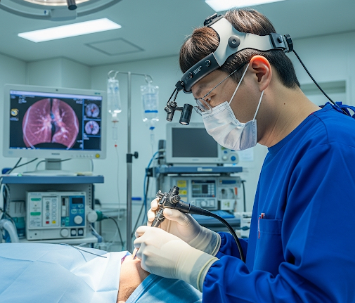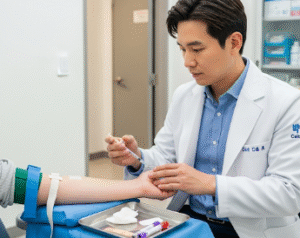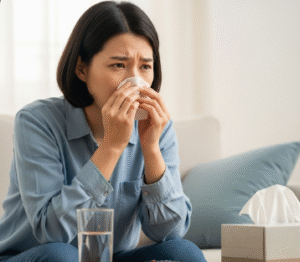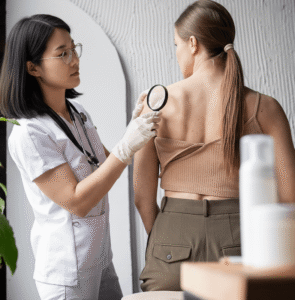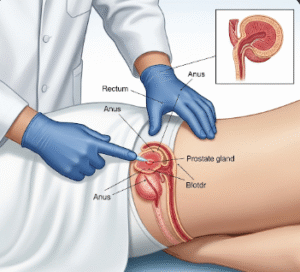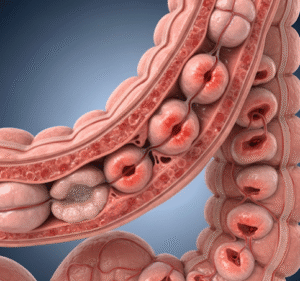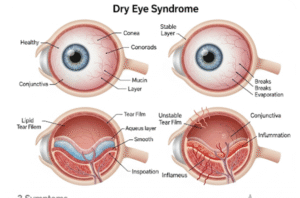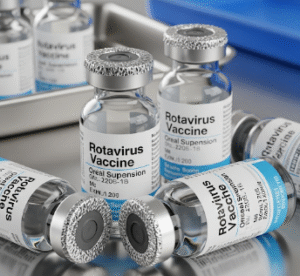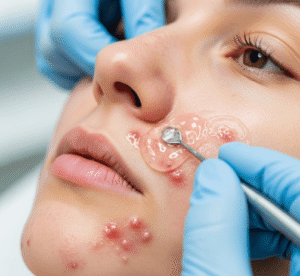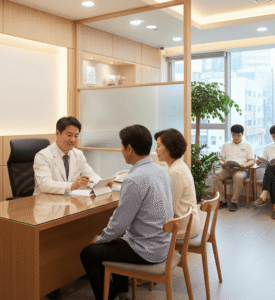Overview
A bronchoscopy is a medical procedure that allows doctors to examine the airways and lungs using a thin, flexible tube with a camera (bronchoscope). It is widely used to diagnose, monitor, and sometimes treat lung conditions.
In South Korea, bronchoscopy is performed using state-of-the-art imaging technology and minimally invasive methods, making it highly accurate and safe. This procedure is commonly recommended for patients with chronic cough, unexplained lung problems, infections, tumors, or foreign objects in the airway.
What is Bronchoscopy?
Bronchoscopy is an endoscopic test where a doctor passes a bronchoscope through the nose or mouth, down the throat, and into the lungs.
Two main types of bronchoscopy include:
- Flexible bronchoscopy: Most common; uses a flexible tube with a light and camera.
- Rigid bronchoscopy: Uses a straight, rigid tube, typically for removing large blockages or tumors.
It is considered an essential tool for lung disease diagnosis and treatment in modern pulmonary medicine.
What are the Benefits?
Bronchoscopy offers several key advantages:
✔ Accurate diagnosis of lung diseases such as infections, cancer, or inflammation.
✔ Tissue or fluid sample collection (biopsy, lavage) for laboratory testing.
✔ Treatment capabilities, such as removing foreign bodies, tumors, or mucus plugs.
✔ Minimally invasive with relatively quick recovery.
✔ In Korea, advanced imaging tools (narrow-band imaging, 3D navigation) improve safety and accuracy.
Procedure Details
1) How should I prepare for Bronchoscopy?
- Medical evaluation: Inform the doctor of any existing lung or heart conditions.
- Medication review: Some blood thinners or diabetes medications may need to be stopped before the procedure.
- Fasting: Avoid food and drinks for 6–12 hours before the test.
- Arrange transportation: Sedatives may be used, so you won’t be able to drive afterward.
Korean hospitals often provide a personalized checklist for preparation, ensuring smooth and safe results.
2) What happens during the procedure Bronchoscopy?
- You’ll receive a local anesthetic (throat spray) and sedation to keep you comfortable.
- A bronchoscope is gently inserted through the nose or mouth.
- The doctor examines the airways and may perform additional procedures such as:
- ➤ Bronchoalveolar lavage (washing with saline to collect cells/fluid).
- ➤ Biopsy (removing small tissue samples).
- ➤ Foreign object removal if needed.
- The entire procedure usually takes 30–60 minutes.
In Korea, many clinics use high-definition video bronchoscopes for precise imaging.
3) What happens after a Bronchoscopy?
- You will be monitored for 1–2 hours until the sedative wears off.
- Mild sore throat, cough, or hoarseness may occur but usually resolve within a day or two.
- Avoid eating or drinking until numbness in the throat subsides (to prevent choking).
- Results (biopsy or lab tests) may take a few days.
Korean hospitals provide fast pathology results and often offer same-day follow-up consultations.
Risks / Benefits
Potential Risks:
- ➤ Mild bleeding after biopsy
- ➤ Temporary low oxygen levels
- ➤ Infection (rare, minimized with sterile technique)
- ➤ Allergic reaction to sedatives
- ➤ Pneumothorax (lung collapse, extremely rare)
Main Benefits:
- ✔ Clear visualization of the lungs
- ✔ Early detection of diseases like cancer
- ✔ Ability to treat certain airway blockages immediately
- ✔ Minimally invasive with low complication rates
- ✔ In Korea, modern bronchoscopy units offer higher safety than traditional methods
Recovery and Outlook
- Same-day recovery is common; most patients return home a few hours later.
- Mild symptoms like cough or hoarseness usually resolve quickly.
- Avoid smoking or alcohol for at least 24 hours post-procedure.
- Results help guide personalized treatment plans for lung diseases.
In Korea, bronchoscopy outcomes are excellent, thanks to expert pulmonologists and advanced medical systems.
When To Call the Doctor
Seek immediate medical attention if you experience:
- ➤ Persistent fever or chills
- ➤ Severe chest pain or difficulty breathing
- ➤ Heavy bleeding when coughing
- ➤ Prolonged hoarseness or inability to swallow
Best Korea Option / Process
South Korea is among the world leaders in bronchoscopy and pulmonary care, attracting both local and international patients.
Why Korea is the best option:
- Advanced technology: High-definition scopes, robotic-assisted bronchoscopy, and narrow-band imaging.
- Multidisciplinary teams: Pulmonologists, thoracic surgeons, and oncologists work together.
- Fast, accurate results with in-house pathology labs.
- Comprehensive patient support for international visitors.
- Affordable costs compared to Western countries, without compromising quality.
Top hospitals in Korea for bronchoscopy include:
- Asan Medical Center, Seoul
- Seoul National University Hospital
- Samsung Medical Center
- Severance Hospital (Yonsei University Health System)

